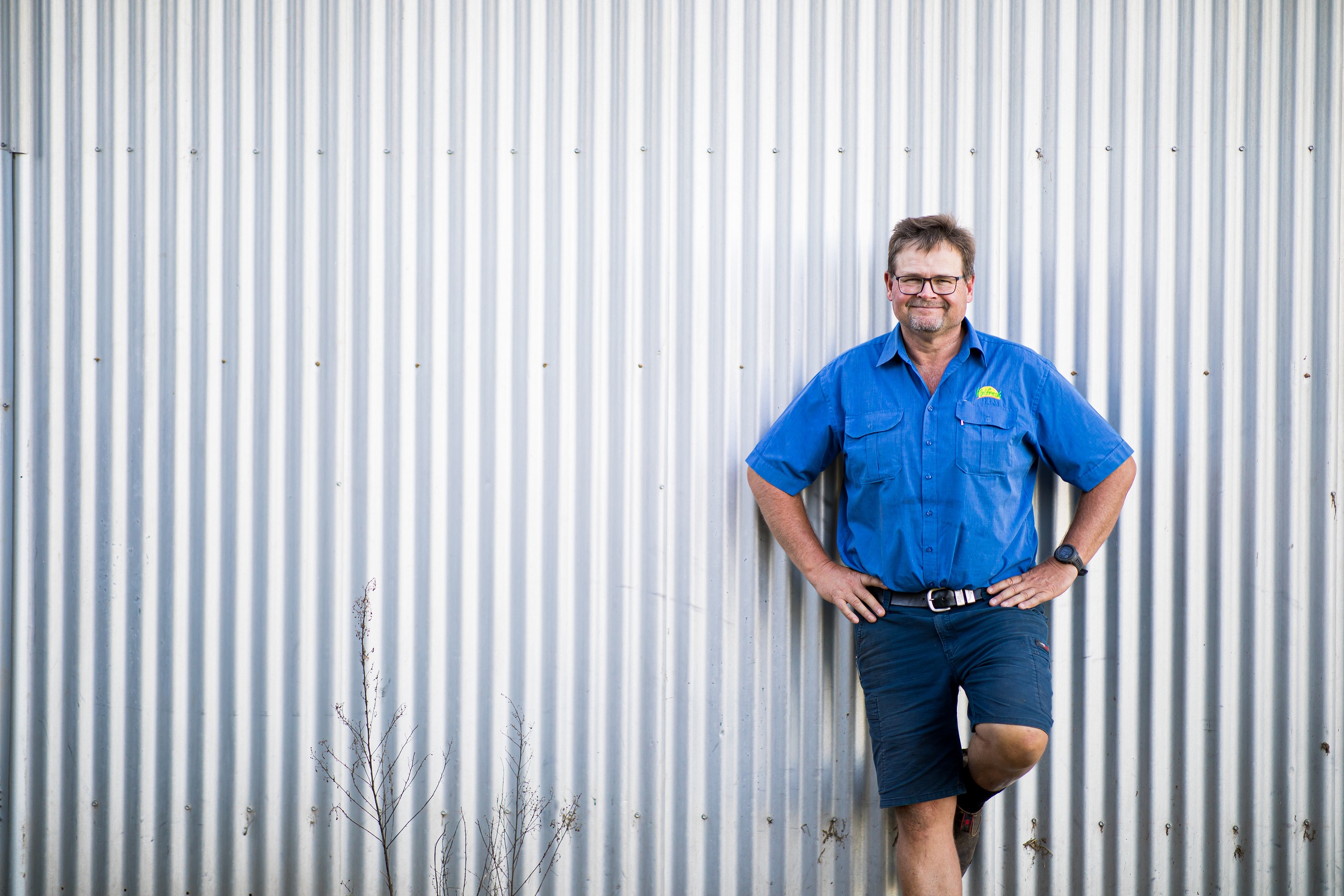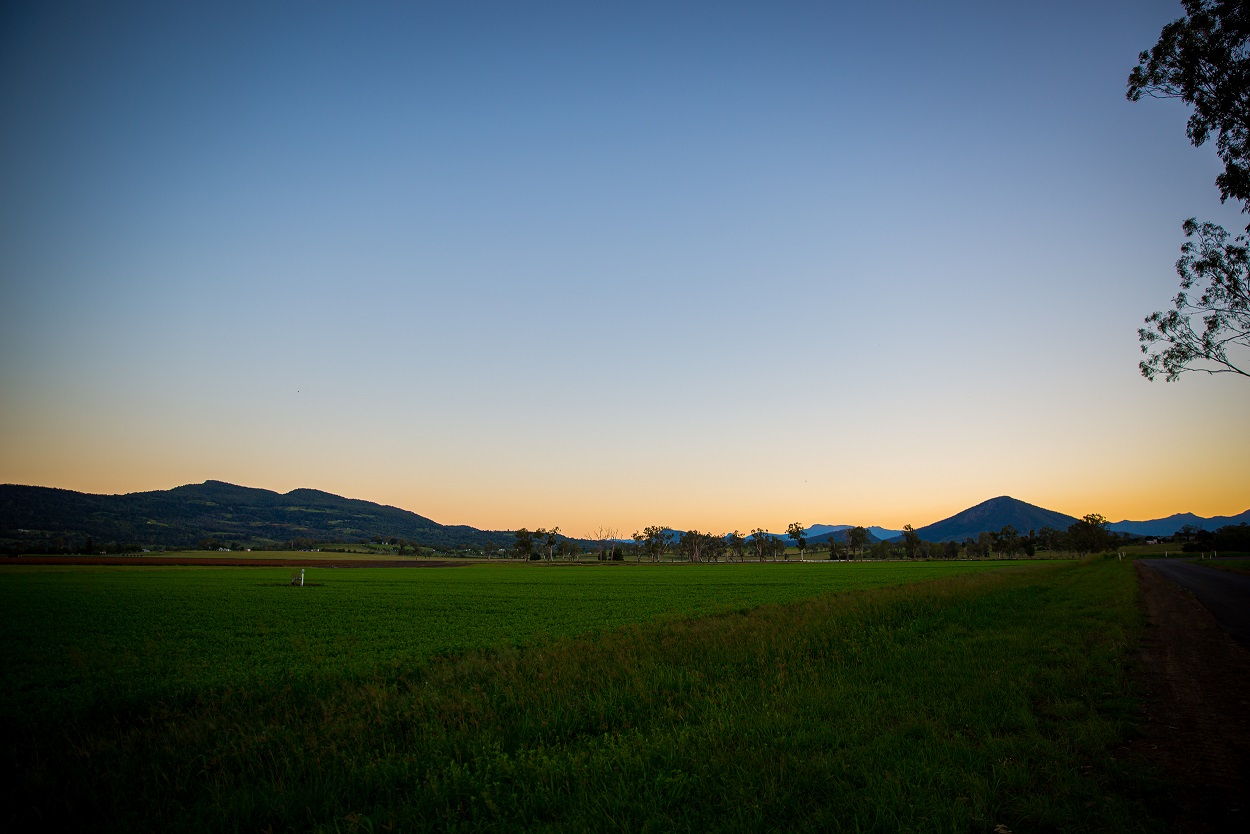
Meeting ‘Mr Su’: A leader in the west’s Vietnamese veg growing community
20 May 2021
Lauren East: Making her mark in the west
24 May 2021In 2016, Robert Hinrichsen received the prestigious Syngenta Grower of the Year award at the National Horticulture Convention – now known as Hort Connections – for his outstanding work across all aspects of vegetable production, including his adoption of innovative technologies and practices. In this edition, Michelle De’Lisle speaks to Robert about the changes that have occurred in the past five years and his views on the current state of the Australian vegetable industry.
Robert, you were crowned Grower of the Year at the Awards for Excellence in 2016. What are you up to now? What is your current role and responsibilities?
Since winning the award, Kalfresh has continued to grow in terms of cropping area, packing ability and diversity of cropping. We have also started a certified organic cropping program, which we have rolled out to 12-month supply of certain lines.
Day to day operations at Kalfresh are run by my business partner, Kalfresh CEO Richard Gorman. My role at Kalfresh is more high-level oversight through the board, with more of my time spent with the farming and harvesting side of the business, including an active role in my family farm, which is a large supplier to Kalfresh.
Can you please give me a brief overview of Kalfresh and the produce that you grow?
The main Kalfresh production facility is located at Kalbar in the Scenic Rim, about one hour south-west of Brisbane. However, Kalfresh now has farms and farming partnerships in nine regions in Queensland, northern New South Wales and Victoria. We have sought new cropping regions for geographic diversity and for water security.
Kalfresh’s main vegetable crops are carrots, green beans, sweet corn, onions, and pumpkins, as well as newer snacking crops such as sweet baby capsicums and organic mini melons. As well as our conventional crops, we now run a 12-month Certified Organic cropping program.
One of the most exciting projects Kalfresh is involved in is a proposal to build an integrated agricultural industrial precinct at Kalbar. Our vision is to provide a destination for food manufacturers, value-add businesses and agricultural service businesses that’s situated in the region where the raw ingredients grow. We believe this will create operational efficiencies, deliver skilled jobs to a regional area, and help Australia’s food manufacturing sector remain competitive on an international stage. The precinct plan has been driven by my partners Richard Gorman and David Krause. We are in the final stages of a State Government co-ordinated planning process and are talking to businesses that are interested in being involved in the Precinct.
Kalfresh will continue to grow and adapt to meet consumer, grower, business and community expectations. Planning for the longevity of the Kalfresh business began several years ago with a move away from family ownership to ‘working partners’. Our CEO Richard Gorman and Agricultural Manager Angus Stainlay have both worked with Kalfresh for more than 20 years. They, along with David Krause – our Chief Financial Officer and a former Ag lead at BDO Accountants – now own 50 per cent of the company. The deepening of the skills base and breadth of responsibilities has allowed the company to grow and diversify, and more successfully meet the challenges of an ever-evolving business environment.
The rollout of this strategic direction for Kalfresh is underpinned by a new generation of young, energetic, passionate managers, supervisors and staff, who are building a solid base of experience and expertise for years to come.

As I mentioned, you received the Grower of the Year award at the National Horticulture Convention in 2016. What did winning this award mean to you?
During the conference that year, I spoke on our soil health journey and the things we had implemented to drive biodiversity and carbon sequestration in our soils. We had also been part of the Soil Wealth project for three years to quantify some of the results of that effort. To win the award that year was like an industry-wide endorsement of the appreciation of that effort and direction.
Did winning the award open any doors for you and the business? If so, how?
It was kind of cool to be able to use the award with the wider supply chain. To win a national award is no small thing, so industry participants are interested in why you have been recognised.
Opportunity also came from speaking to touring parties who stopped in for a look at the compost, farming methods etc. Other industries like sugar and cotton also had me speak to growers and I did a travelling soil health conference in the Northern Territory, which was a blast!
"The rollout of this strategic direction for Kalfresh is underpinned by a new generation of young, energetic, passionate managers, supervisors and staff, who are building a solid base of experience and expertise for years to come."

How has your role in the industry changed in the past four years, and what have you learnt in that time?
I started my time with Horticulture Innovation Australia (HIA; now Hort Innovation) under the old Industry Advisory Council (IAC) model and worked through the changes to the industry pillar/Strategic Investment Advisory Panel (SIAP) model. After nearly 10 years in this role, I felt it was time to step aside and allow some younger growers to participate. The HIA role was very rewarding not only in terms of driving R&D, but also provided a somewhat unique opportunity to meet a nation-wide variety of growers and researchers that are the backbone of the industry here.
2020 might go down as the COVID year, but for us it was the year of national biosecurity failures resulting in some major new pests. Hot on the heels of the cowpea mild mosaic virus the year before, 2020 brought fall armyworm and serpentine leaf miner to our growing areas, with new skills in management required. It reinforced the need for a strong R&D focus, firstly in terms of information for growers on the pests, and then management options for in crop control. Access to available chemistry is vital in dealing with new pest problems.
In terms of research and development, what do you think is vital to the vegetable industry right now?
COVID-19 may have brought some opportunities that are low hanging fruit for our industry. Firstly, a renewed concern about food security, provenance, and safety. Perhaps an opportunity to research what some of these changing perceptions mean to the industry. Secondly, the COVID-inspired labour shortages mean we should at least be constantly scoping automated or robotic ideas for our fields and packing sheds.
Outside of COVID-19 – but still in keeping with consumer expectations – is the very big conversation around conservation and regenerative ag. Many Australian vegetable growers are using the principles of regen ag to improve soils and therefore their products. Research to quantify the benefits of things like cover cropping to reduce siltation and nutrient leaching gives the industry standing on environmental issues and should encourage wider industry adoption and government support.
An ongoing need for R&D is gap analysis of available chemistry and work towards filling those gaps with available or new chemistry. With a concerted push toward IPM strategies and the use of soft chemistry: the more options are available to growers and the less resistance we see to available chemicals. Particularly with aggressive new pests like fall armyworm, a range of chemical types being available to industry is paramount.
Furthermore, funding should be available for research into endemic parasitoids, beneficial insects and viruses that can be used in conventional IPM strategies, or organics. The new serpentine leaf miner is a case in point. Perhaps a local beneficial insect will become our best first line of defense?
"I love working in this industry and being part of it. This industry involves many of the smartest, savvy, hard-working people in this nation, and I honour them."
What do you enjoy most about working in the vegetable industry?
I love working in this industry and being part of it. This industry involves many of the smartest, savvy, hard-working people in this nation, and I honour them. I like everything about this industry that I have been involved in for 30 years. Of course, there are challenges around increasing costs to grow crops and operate; increased risks and regulation, but I still enjoy being involved in the vegetable industry.
Where do you get your on-farm practical advice from?
Advice comes from many places, but ultimately from other growers. Online groups have become valuable, particularly in the soil health space. Typically, the groups include growers, academics and researchers, so a healthy balance is maintained. I love to travel and see innovation first-hand, curtailed this year due to COVID-19. I must say, you do not have to leave Australia to see great innovation with growers who I would consider to be world leading innovators right here.

What is your proudest achievement as a vegetable grower?
Kalfresh has been in operation for almost 30 years and the big questions become about longevity, sustainability and perpetuity. I have spent most of my life connecting with people who do the things I can’t do well, which has built a great basis for Kalfresh going forward – not being reliant on one person.
We have a great board and management team at Kalfresh that have enabled the business to grow and flourish. This structure and the people we work with make me immensely proud and are consummate professionals in their roles and in life. Essentially, I could disappear tomorrow and Kalfresh will continue to grow and distribute food to a very high standard all around the world.
I am equally proud that several of my children are joining the business and continuing the family tradition of passionate growing.
Do you have future plans for the farm – is there a particular direction you’d like to pursue? Where would you like to see the business develop across the next decade?
My remaining time as a farmer will be future looking and legacy based. I am convinced that the implementation of regenerative ag principals into horticulture will drive production and alleviate some of the issues I mentioned previously. But it’s a journey, not a destination. Every step is a learning step and results happen over time – not immediately.
The use of plants to heal and regenerate soils is something I am very interested in. It is common for us now to follow the harvester with the drill, catching the residual crop moisture to cover the soil between crops. The type and number of plants we now use in cover crops is growing. Our understanding has gone from growing tonnes of biomass, to propagating the most diversity in soil microbes by growing the most types of plants we can. A recent hot spell highlighted the importance of soil cover. While bare soils baked in the sun, our covered soils took the light from the sun, multiplied the energy by 400 per cent through photosynthesis, and drove that energy into our soils through carbohydrate rich exudation. This process brought life and health to our soils in this tough period, while other soils baked.
For me, it’s a legacy thing to leave the farm in a better shape than I took it on. For the nation, it is a rural and urban win-win as catchments, watersheds, rivers, bays, reefs, fisheries and national parks all benefit.
This grower profile first appeared in the leading magazine for the Australian vegetable industry, Vegetables Australia. If you’d like to subscribe to receive a new edition of Vegetables Australia in your mailbox every three months, use our online subscription form!
Images courtesy of Anna Osetroff.


